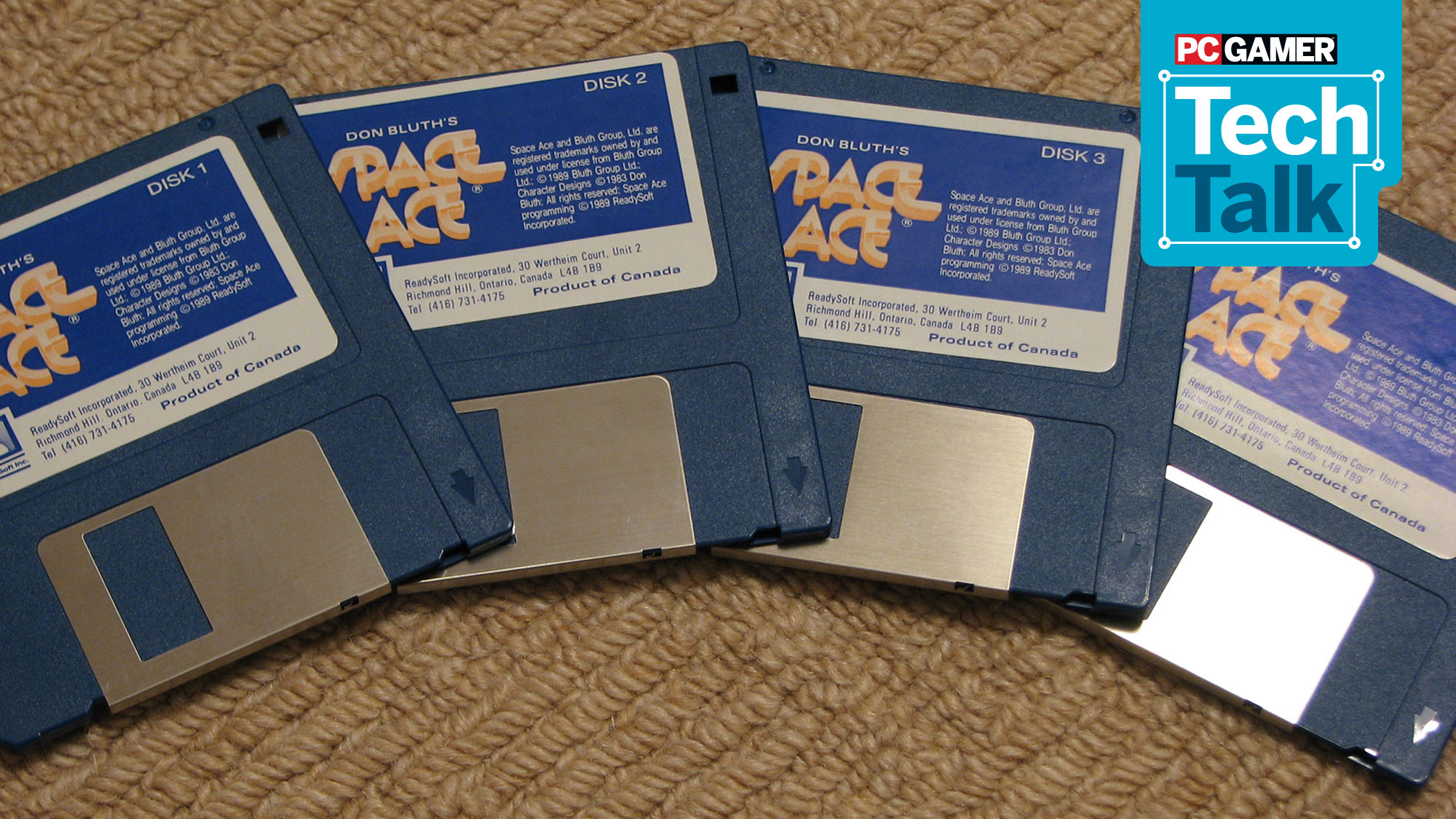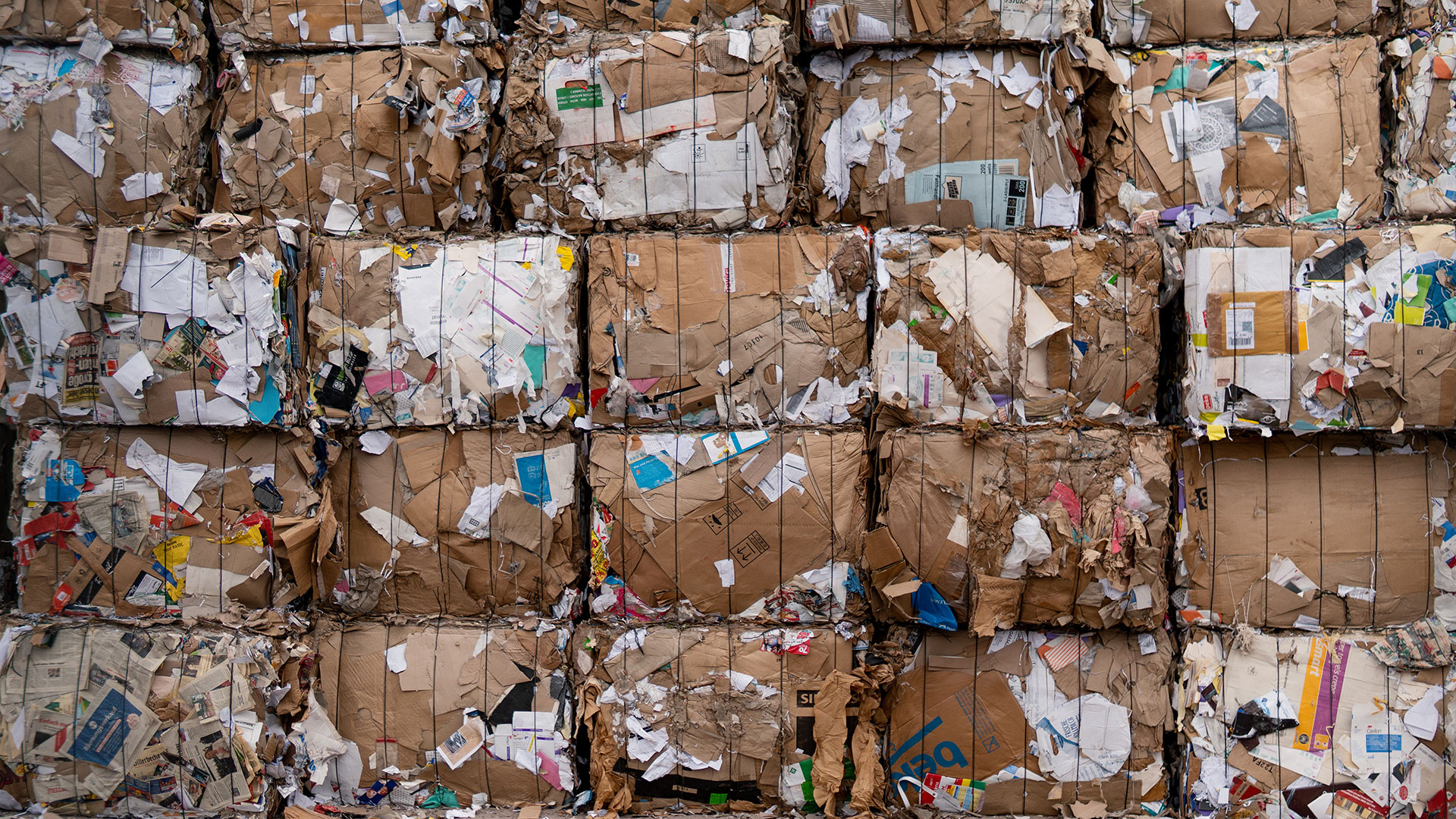Does A Games File Get Bigger With Updates?
Why are game install sizes getting so big?

Remember just last month when I said that the HDD is expressionless to me? Some of the latest games are trying very hard to make me reconsider. Where I used to experience 1TB of storage was more than sufficient and 2TB was spacious, multiple games have come out or will soon arrive where the install size is more than 100GB. I certainly don't need every game I ain installed on my PC, but I practise like to keep a collection effectually for testing and such. And with Cerise Dead Redemption 2 apparently ready to suck upwardly 150GB, and Call of Duty Mod Warfare thinking it may eventually need 175GB, it got me wondering.
Simply WTF is going on with game sizes that nosotros're suddenly jumping from 50GB beingness a large install to nearly three times that much!? I recollect when entire worlds of gaming could exist contained on merely a unmarried floppy deejay—or peradventure a collection of floppy disks. Whatever. The point is, if nosotros were still doing concrete distribution media, we're looking at games that would crave 20 DVDs, 250 CDs, or a mere 121,500 3.5-inch floppy disks. That'due south the i.44MB "high density" variety, naturally, not the earlier 720KB version.

I decided to do some earthworks, considering while the uncomplicated reply is that there are more textures, videos, audio, maps, and other files being included, that doesn't really explain everything. I ended upwardly focusing on the start item in that listing, because it was the most approachable and I've seen quite a few Hd texture packs come up out in the past couple of years. What I actually wanted to know is why college resolution textures are so gigantic.
Let me showtime off with a elementary case of files sizes for a relatively modest 2048x2048 texture—or a 2K texture size if you prefer. If you desire to shop a texture without any compression, that would typically hateful a 32-bit value for every pixel: RGBA (Scarlet, Green, Blue, and Alpha—alpha being the technical proper name for transparency). That's nigh 4.2 meg pixels and iv bytes per pixel, and we terminate up with a nice circular 16MiB file size. At present imagine all of the models and textures in some of the larger open-world games out there. If every surface used a 2K uncompressed texture, fifty-fifty with 150GB of textures at that place would nevertheless only exist room for nine,600 unique textures.
Okay, that actually doesn't seem also shabby, simply remember that'south for 2K textures. What if the game wants to utilize 4K textures (4096x4096 resolution)? That would quadruple the file sizes, or cutting the number of unique textured down to ane-fourth as many. 2,400 textures in 150GB, or only 800 textures in a 50GB game. That doesn't seem like nearly enough for a modernistic game with lots of unique environments, and it'due south not.

But let me go back to that uncompressed bit. Why should textures be stored uncompressed? Certain, it might consequence in slightly higher image quality, but the file sizes can be massive (relatively speaking). Anyone familiar with digital images is probably thinking JPEG or PNG files would be meliorate, and as far as file sizes go, they'd be right. Information technology's like putting trash into a compactor: a high quality (only lossy, pregnant there are compression artifacts) JPEG could cut the file sizes down to effectually 2MB each for example, and higher pinch rates (and lower quality JPEGs) could reach file sizes of 1MB or even 0.5MB. Alternatively, fifty-fifty lossless PNG compression could typically cutting the file sizes in half.
The problem is both of those imaging algorithms are variable and somewhat complex. Your PC might only require a fraction of a 2d to open up and process a JPEG image, only what if it had to procedure thousands of such images? Game loading times would skyrocket, and gamers wouldn't exist happy.
Enter DirectX Texture Compression, aka DXTC (and formerly S3TC, named after the now-defunct company S3 Graphics that created the technique dorsum in the tardily 90s). S3TC became officially supported equally of DirectX 6.0, which was released way back in 1998, and renamed DXTC with five modes of operation. I won't dig into the low-level details, but in short DXTC is a fixed charge per unit image pinch algorithm. Unlike JPEG and PNG, that means information technology's piece of cake to determine precisely how large the resulting files will exist, and it's also easier to create hardware to speed up the processing of images. Basically, all modernistic graphics cards since effectually 2000 take had hardware support for S3TC / DXTC.
For games that use DXTC, the near common modes of operation yield either a 6:ane or a 4:1 compression ratio. That means a game tin can shop 4 to six times equally many images within a given infinite. Unreal Engine and Unity Engine support DXTC, along with other file formats, and while I'chiliad sure there are exceptions, my understanding is most games currently use DXTC for their textures. And of class, non all textures used in a game need to exist the same resolution, so smaller objects that may merely occupy a few hundred pixels of screen space don't need to be stored as a massive 2K or 4K texture.
![Mipmapping by BillyBob CornCob [CC0]](https://cdn.mos.cms.futurecdn.net/R3YprKZy3JbxQhzzexqyja.jpg)
There's 1 more matter: mipmaps. MIP is apparently from the Latin phrase "multum in parvo," meaning "many things in a small identify." (Yeah, I didn't know that either until I was writing this article—thanks, Wikipedia!) Mipmaps have been around since the early 80s and have been used extensively in graphics applications. The brusk summary: non every texture needs to exist stored at full resolution, all the fourth dimension, and by precalculating lower resolution versions of a texture it's possible to optimize memory and bandwidth requirements.
Each DXTC texture ends upwardly storing mipmaps of the same texture at every one-half the resolution intervals, all the fashion downward to basically nothing—a 1x1 pixel. If you lot start with a 2K texture, y'all need to precalculate 11 boosted mipmaps (also simply called mips): 1024x1024, 512x512, 256x256, 128x128, 64x64, 32x32, 16x16, 8x8, 4x4, 2x2, and 1x1. Unreal Engine even provides this helpful documentation listing the final file sizes.
We can at present at least get a reasonable thought of how much space a game will require based on the number of textures it uses, along with the texture size. It all starts with the number of unique textures, and for simplicity I'thousand going to ignore the fact that not all textures are the same size. For any reasonably complex game with a lot of unlike environments, I remember information technology'due south safe to say that it will employ thousands of textures. Let'southward just toss out 10,000 as a nice circular number.
Going with Unreal Engine file sizes, for 1K textures (basically a "high quality" texture), the game would need 13.3GB of textures. Crash-land up the resolution to 2K textures and that jumps to 53.3GB. And if you want the latest and greatest 4K textures, you lot're looking at 223.7GB. Oops. And that'southward just for textures—almost games will besides have lots of audio files, especially if they're fully voiced (like Call of Duty and Cherry-red Dead Redemption 2). Add together in map geometry files and some videos and any modern game that uses 4K textures is going to finish up existence pretty massive.

There's patently no single answer as to how a game stores its textures, never listen audio and video files. However, in full general, much of the game install size bloat from the latest games appears to be coming from the texturing department. The do good is that we no longer get clearly repeating textures in games, and everything looks far more realistic. Wait dorsum at games similar the original One-half-Life, or Deus Ex, and the improvement in image fidelity is massive. I'chiliad looking frontward to staring off into the dusk in Red Expressionless Redemption 2, admiring the graphics—150GB exist damned!
Just higher resolution textures are clearly a instance of diminishing returns, particularly at lower resolutions. Switch from ultra to high textures (4K to 2K, or from 2K to 1K) and information technology'due south oftentimes hard to see the changes, particularly on a 1080p monitor. That's because the textures are usually only being used on a small portion of the screen. Upwards close, a wall with a 2K texture should await better than the same wall with a 1K texture, but back up and the game engine volition probably bandy out the 2K texture for a lower resolution mipmap and you'll never even observe.
That'due south good news, considering I'grand certainly not looking forward to whatever games trying to include 8K resolution textures that quadruple the install size notwithstanding again. Mayhap when we're all using 8K displays at some indicate in the future it will get a gene, simply hopefully by then we'll also accept affordable SSDs with capacities in the tens of terabytes. That or someone clever will effigy out a better texture compression algorithm. I can but hope.
Source: https://www.pcgamer.com/why-are-game-install-sizes-getting-so-big/
Posted by: holtthea1980.blogspot.com


0 Response to "Does A Games File Get Bigger With Updates?"
Post a Comment